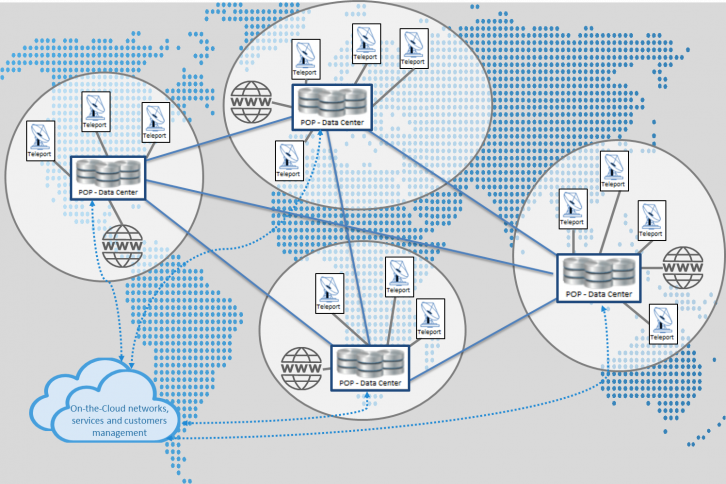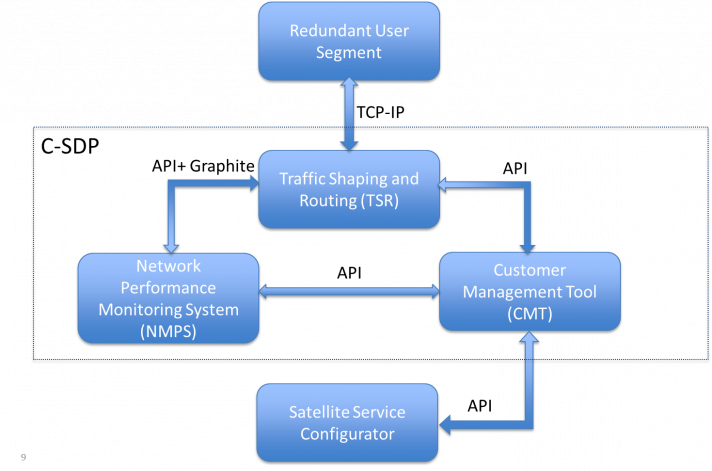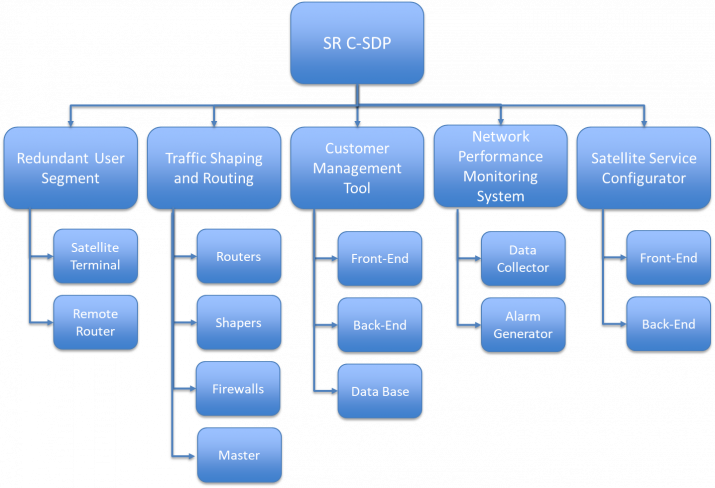
-
StatusOngoing
-
Status date2021-03-08
-
Activity Code3A.126
The scope of the proposed activity will be to develop, test, validate and pilot with selected demanding end users a secured and resilient cloud-based service delivery platform (C-SDP). In particular, key strategic objectives for SatADSL are to:
- Further develop current markets, both commercial and governmental, and address new verticals through Internet Service Providers (ISPs) or directly toward end-users.
- Increase currently operational SatADSL Cloud-based Service Delivery Platform (C-SDP) capability by adding security and resilience o both the service delivery infrastructure and the services offered.
- Increase C-SDP cybersecurity level from “Reactive” to “Anticipatory” (proactively addressing future issues and challenges)
- Extend Platform-as-a-Service (PaaS) business to larger teleports by guaranteeing service quality (obtaining equivalent World Teleport Association - WTA teleport certification)
- Achieve economies of scale by fostering Platform-as-a-Service (PaaS) partnership with multiple Teleports targeting demanding market segments.

The fact that the system is geographically distributed has impacts on its security and resilience. When looking at security, geographical distribution adds to the challenge in terms of physical protection and cyber-security of each Point-of-Presence (PoP) and their interconnections. When looking at resilience, geographical distribution provides an opportunity by introducing physical redundancy among PoPs. Nevertheless, a number of technological challenges must be faced in order to achieve functional redundancy among PoPs.
The activity scope is the enhancement of SatADSL Global Service Delivery Network to make it resilient against catastrophic events, terrorism, natural disaster etc. In case, for example, of a natural disaster or terrorist attack in Singapore damaging the local POP the traffic must be automatically re-routed to the closest POP. This will add some latency to the service, but there will be no significant interruption of service.
Other key challenges will be:
- To ensure that any general network downtime due to cyberattacks will not exceed 0,01% per year
- To ensure continuity of service in case of SatADSL network component failure with a possible service interruption of no more than 10 seconds
- To ensure continuity of service in case of SatADSL POP failure (due an external event) with a service interruption of no more than 9 hours
- In the case of a redundant user segment (with 2 satellite terminals at user site) to ensure that service interruption will be less than 1 hour
- To ensure end-to-end service availability of more than 99,5% availability per month
- Develop a secured MarketPlace aiming at aggregating the various players in the value-chain
- Define a blueprint of architectural security framework as a result of integrating multiple governance model, architectural frameworks and security concepts and implement it through security policies, procedures and measures applied to the SatADSL C-SDP and related business practices
- Upgrade the Cloud-based Service Delivery Platform (C-SDP) operated by SatADSL, currently serving commercial users, in order to provide the level of resilience and cybersecurity required by increasingly demanding customers for high availability services, in a context of growing cyber-threats and natural/human hazards.
- Improve service quality by allowing users all along the value chain to choose the required availability , monitor it operationally and set up certification processes to guarantee service quality all along the service delivery chain.
- Allow the integration of third-party Value-Added Services that satellite, teleport, hub and service operators consider as beneficial in the provision of VSAT connectivity services
- Allow end users to browse available connectivity services, configure their networks and order their satellite communications services though one unique aggregated gateway.
The product is geographically distributed through a number of Points of Presence (PoPs) implementing the Traffic Shaping and Routing functionalities in different regions of the world. The figure below provides a view of the distributed multi-teleport, multi-satellite cloud-based service delivery platform with points of presence (POP) in the main continental areas. The cloud-based management and monitoring functions connect to any of the available Points of Presence (POPs). Each POP, located in a specific continental area, connects to a number of regional hubs and ensure local traffic shaping and routing. Connections between Hubs and POPs are currently made through Generic Routing Encapsulation (GRE) tunnels on the (public) terrestrial optical fiber network. The POPs are also interconnected between themselves, so that if one POP experience a problem, the traffic can be routed to another POP where it will be processed. This will increase resilience and availability of the existing infrastructure. Each POP also connects to the Internet in order to be able to transfer customers’ traffic from and to the public networks. 3 POPs will be available at the beginning of the project (they are located in Brussels, Singapore and Miami) but will not be inter-exchangeable. At the end of the project they will be inter-exchangeable with the appropriate level of resilience (real time “hot” redundancy).

SR C-SDP distributed architecture
Regarding the user terminals, some demanding customers are willing to get a guaranteed 99,9% service availability and the assurance that there is no single point of failure in the service delivery network.
The figure below provides a view of an end-user resilient remote site answering to this need. This is based on the concept of satellite and teleport diversity. As a result of the proposed activity the currently SatADSL existing feature of “redundant set-up” will be further developed so that, at user site there will be two different satellite terminals each one pointed to and provisioned on, so ready to generate traffic, a different satellite and using a different teleport.
The user remote LAN will be connected to these two satellites links through a set of redundant load-balancing routers configured in swap-over mode. In case of problem with the main connection, like for example service outage, wherever the problem is, being in the remote terminal, at the satellite or at the teleport, the system immediately and automatically swaps over to the back-up connection, ensuring uninterrupted connectivity.

Satellite and Teleport Diversity
The product consists of the SR C-SDP. The main components of the product (building blocks) for the purposes of the project are
- The Traffic Shaping and Routing System (TSR)
- The Customer Management and Monitoring Tools (CMT)
- The Network Performances Monitoring System (NPMS)
- The secured Satellite Service Configurator (Marketplace)
- The Redundant User Segment
The product is illustrated in the following high-level block diagram, which identifies the key building blocks and major interfaces.

The following product tree is a hierarchical breakdown of the product into the hardware and software elements (building blocks) that are required to perform the product functions (features):

The Project has a duration of 24 months, starting with a phase of 3 months to consolidate the requirements until the Baseline Design Review Milestone. This milestone sets the start of the architectural design period (3 months until the Critical Design Review) followed by a development period of 6 months until System Acceptance Test foreseen in April 2021. Once the product is accepted, it will be piloted during one year. Final Review is foreseen in March 2022.
The Contract has been signed during the summer of 2020 and kicked-off the 11th of September. The baseline Design Review is planned for the 22nd of October 2020.


